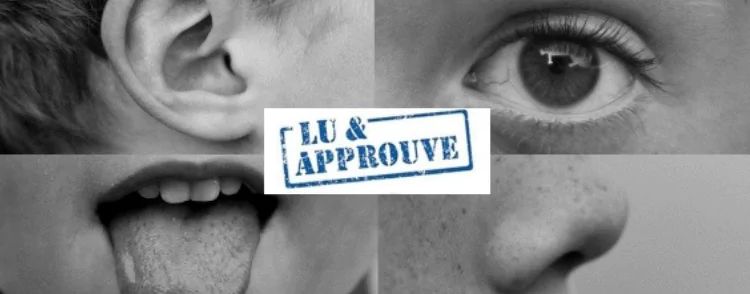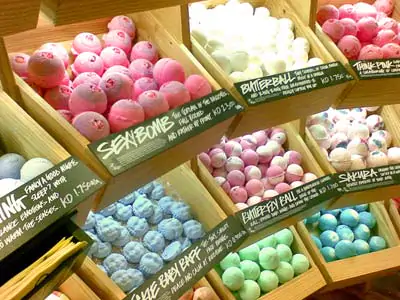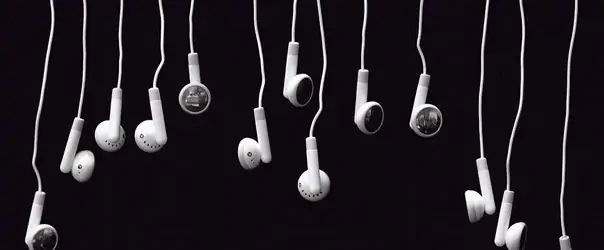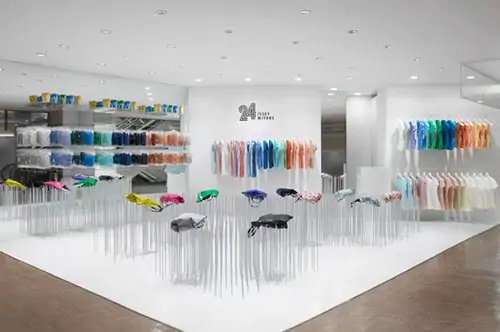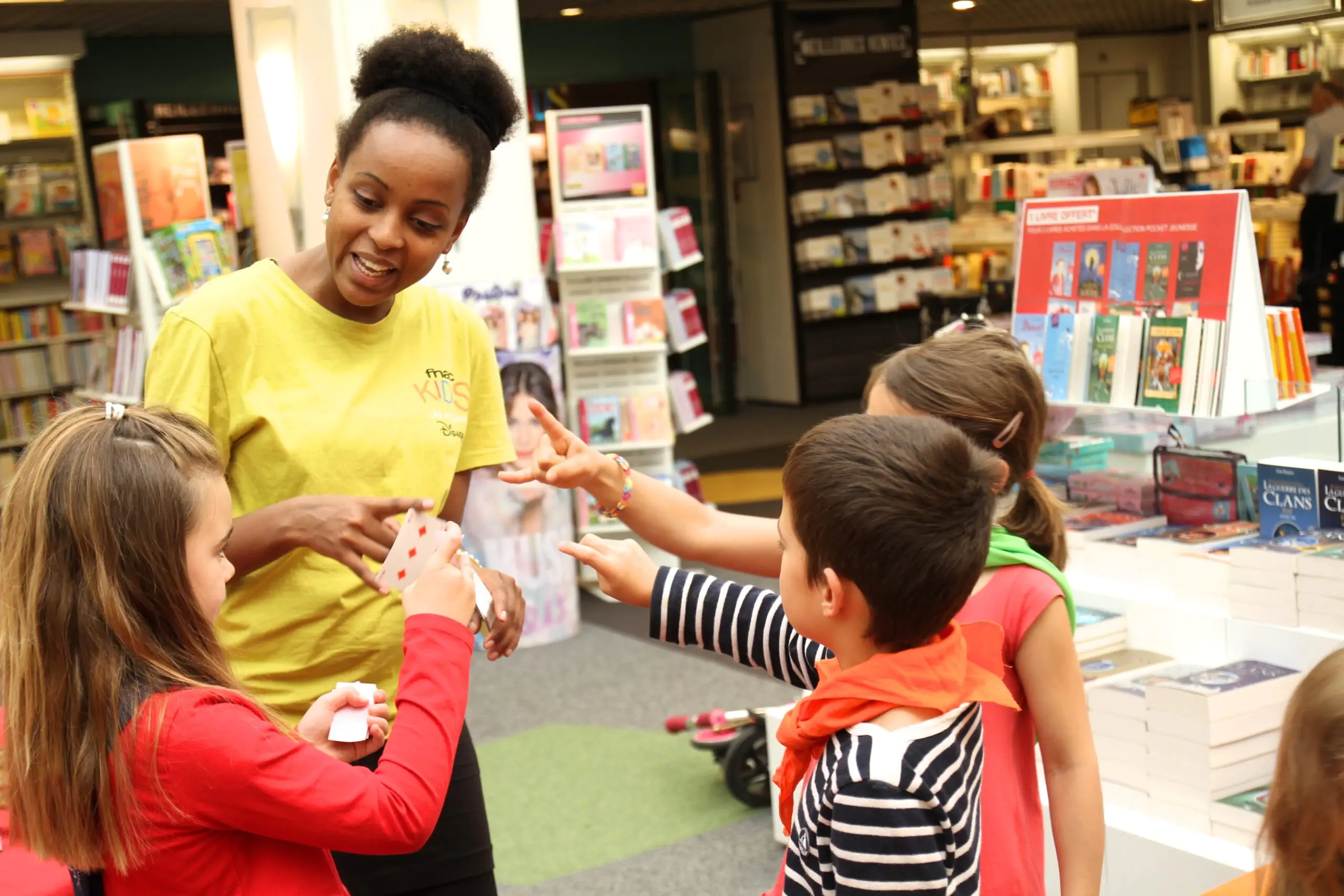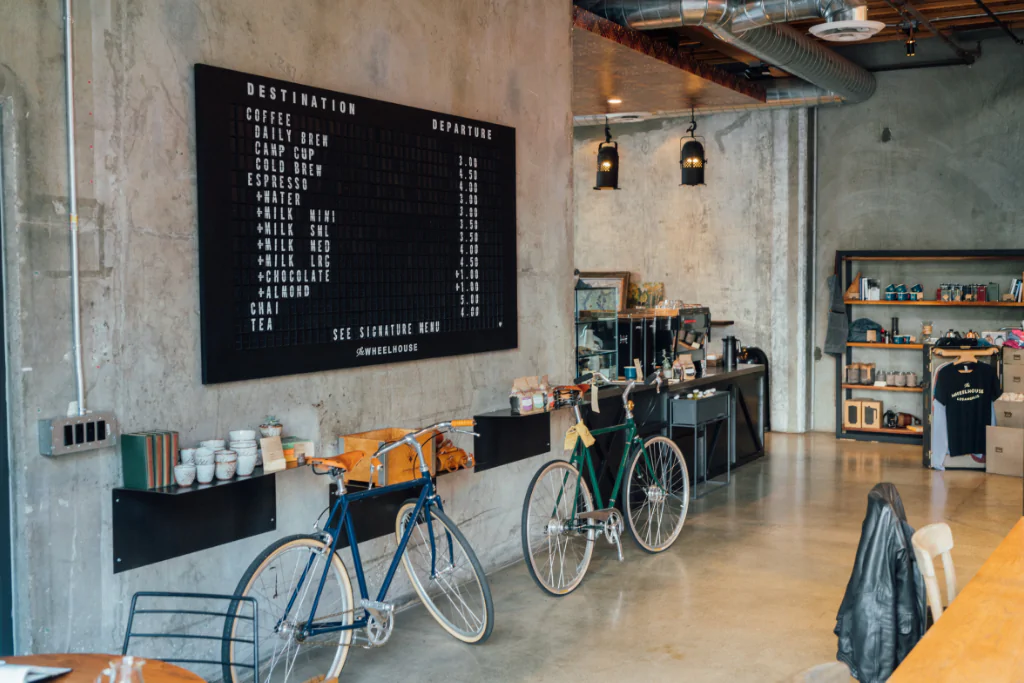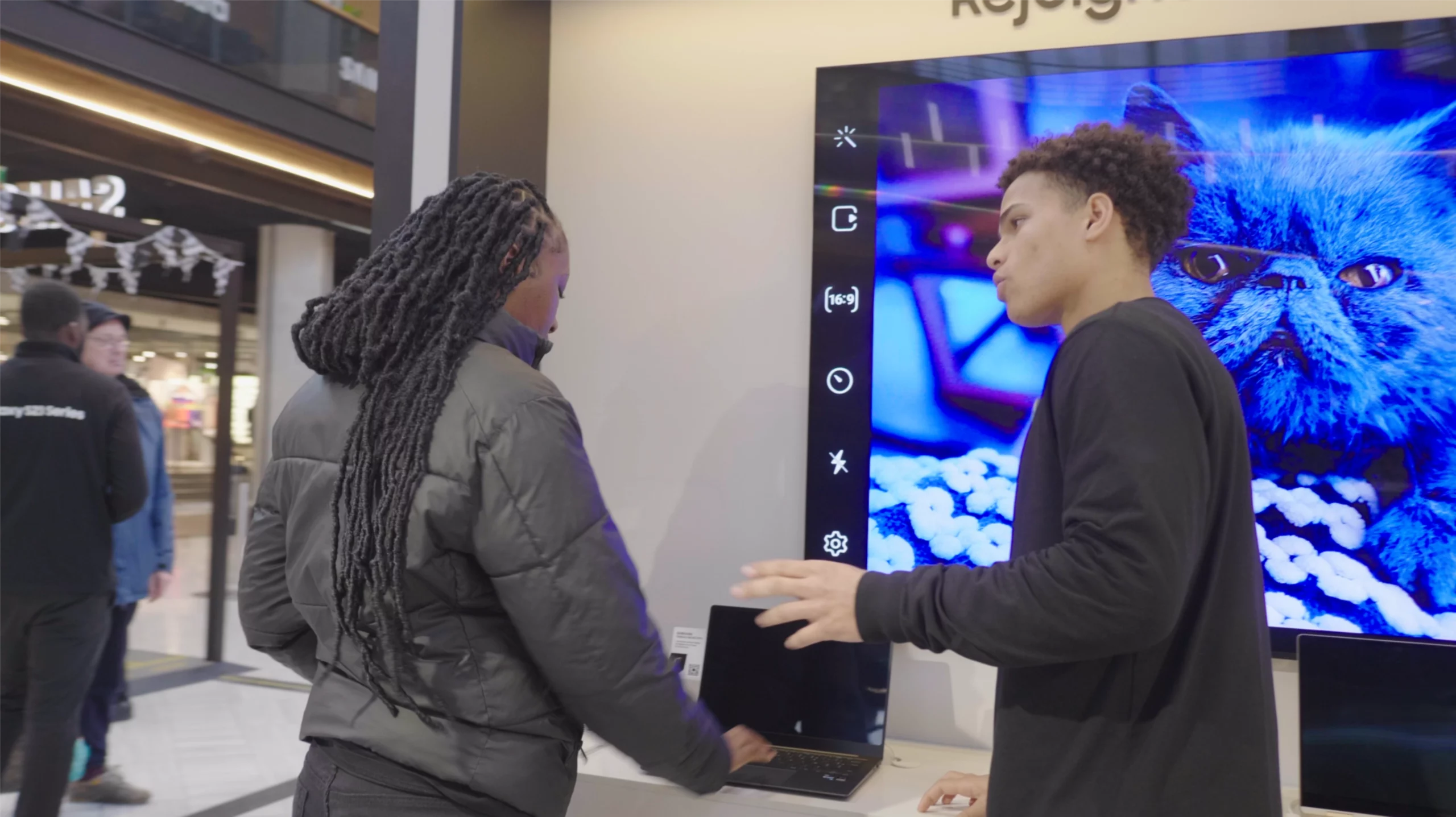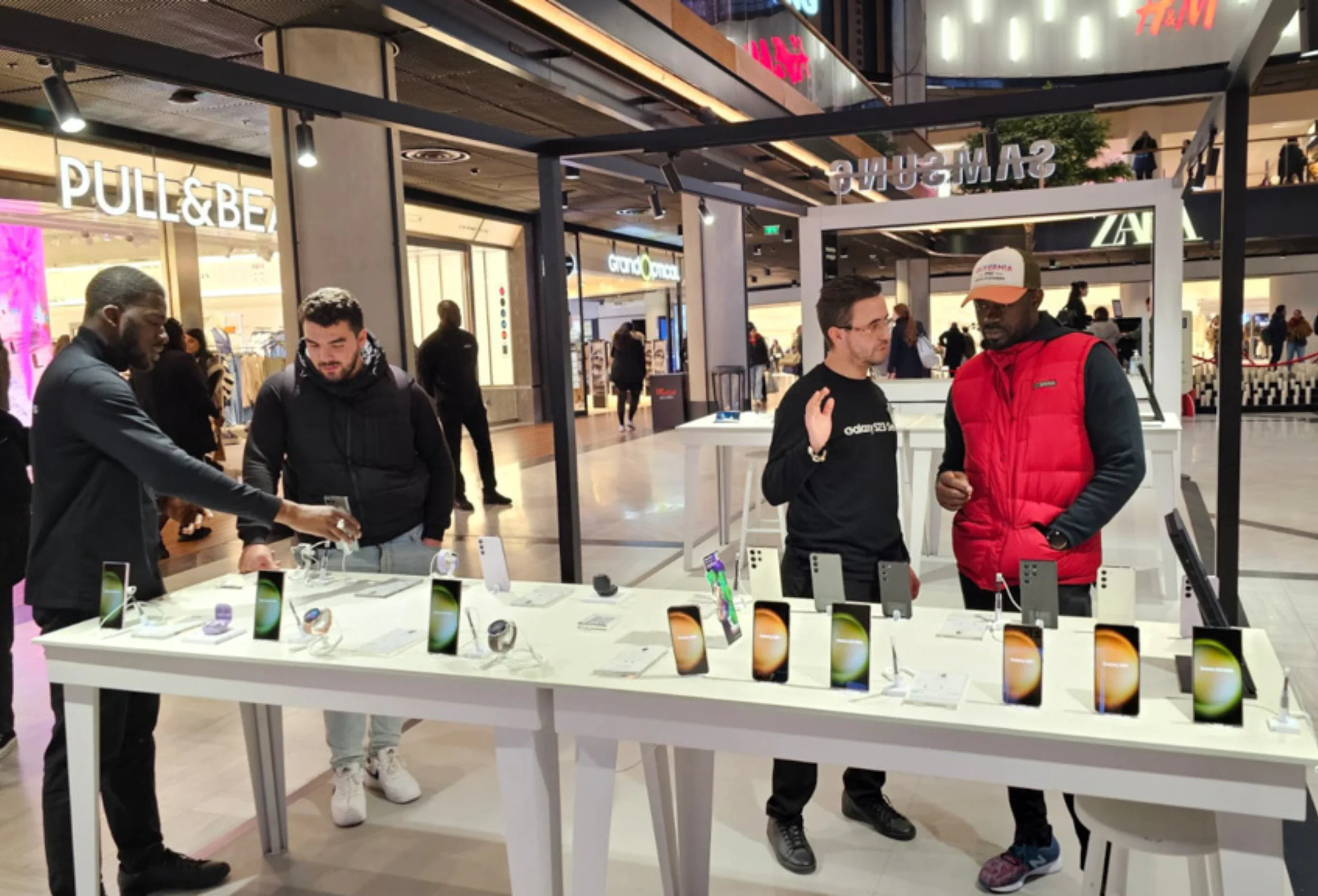Retail Design: Transforming the customer experience with sensory marketing
Posted on24 Feb. 2014
For once, here is a more academic post than usual – just to give a bit of depth to the subject – which completes our saga on the secrets of memorable experiences and where we will evoke the case of the sensorial experience in shops. It is the result of a bibliographical research work by two students with a Master’s degree in physiology of perception and sensory evaluation at the Claude Bernard University in Lyon: Julie Noharet and Thibault Vallet. This work was carried out at the request of Agnès Giboreau and had as its theme: “the sensory experience in sales areas”: we would like to thank them for this. The sensorial experience is obtained by implementing sensorial marketing actions that can be found in the new visual merchandising strategies, intended to stimulate the five senses and whose aim is to arouse reactions in the consumer that are favorable to the act of purchasing. The components of the atmosphere are multiple and can be grouped into sound, olfactory, aesthetic, tactile and gustatory environments likely to provoke four types of reactions in the consumer: affective, cognitive, physiological and behavioral. In this post we will take stock of the main trends in retail design and their effects on the shopper.
Retail Design: Focusing on the 5 senses to encourage the act of buying
In the last decades, shopper behavior has become considerably more complex and includes a strong emotional component (Pooler, 2003): the consumer is perceived as an emotional being in search of sensitive experiences (Maffesoli, 1990). Experiential marketing as a strategy for re-enchanting the act of purchasing integrates this paradigm shift and posits experience as a key element in understanding postmodern consumer behavior (Carù, 2006). It proposes an immersive and polysensorial shopping experience thanks to the staging of the product in its environment, also known as visual merchandising (Badot, 2007). This concept, which aims to take into account the atmosphere variable of the places of service and which involves actions at the level of the sales space and in particular the stimulation of the five senses, was theorized by Kotler in 1973: “The colors, sounds and textures of the establishment can directly arouse visceral reactions which contribute favorably to the probability of purchase…”. He thus broke down the sales space into four dimensions: visual, auditory, olfactory and tactile, thus showing the importance of each of the senses on consumer behavior. Following this discovery, many specialists (psychologists, behavioral science researchers, etc.) have also studied the involvement of the senses in sales areas and have tested the effects of the different atmospheric variables on consumer behavior and mental dispositions in order to study the relative interest of stimulating each of the senses and its limits.
1- The impact of smell on the customer experience
The influence of the olfactory dimension of the atmosphere on consumers within a sales space has been the subject of numerous studies which have revealed that in the presence of certain scents, individuals tend to stay longer and to underestimate the time actually spent in a shop. Moreover, the memorization of brand names would be facilitated by the diffusion of a pleasant ambient scent (Morin, 2000) and the diffusion of a lemon scent would have a positive impact on the evaluation of the sales outlet (Chebat, 2003). In their study on odours, Mitchell et al (1995) showed that the dramatisation of the point of sale by the diffusion of a smell in line with the positioning of the product positively affected the consumer’s decision: the more time he spends analysing the product, the more inclined he is to go beyond the information given. Spangenberg et al (1996) showed that a store was more appreciated when a neutral odour (e.g. a floral scent) was used than when no odour was used. The strategic use of aromachology, a science dedicated to the analysis of the effects of scents on the emotional state, has made it possible to create repertoires of relaxing (rose, orange, lavender, etc.) and stimulating (lemon, peppermint, jasmine, etc.) scents using physiological measurements. The use of ambient scents to influence consumers is therefore of real interest due to their strong evocative power, their significant memory longevity and their strong affective charge. However, their use is limited by strong inter-individual variability, as evocation is strongly influenced by the olfactory landscape experienced by the consumer in the past. Moreover, the control of diffusion is delicate: problem of homogeneity of the odour and persistence over time. Nevertheless, it is one of the least expensive merchandising techniques for improving the perception of a commercial environment (Chébat, 2003).
2- The impact of sound on the customer experience
The interest in the sound dimension of the atmosphere is enhanced by the fact that silence has a negative effect on the behaviour of customers in the shop who spend less time there (Guéguen, 2005), spend less (Guéguen, 2002) and are in a worse mood (Alpert, 1990). In addition, in-store music can have an impact on the pleasure or mood of customers (Lemoine, 2003). The pleasure induced by music positively influences the perception of the shop and the judgement of salespeople (Dubé, 2001). The evocative power of music automatically activates in memory a set of thoughts which are closely linked to the melody’s own style (Gallopel, 1998): it can thus connote the shop’s universe (Yalch, 1993) and thus increase sales (Areni, 1993; Sibéril, 1994). A behavioural effect of the broadcasting of a sound environment corresponding to the tastes of consumers is the increase in the time spent in the shop (Yalch, 1993). This variable is also influenced by the tempo of the music (Milliman, 1982). Thus, ambient music in retail outlets is a factor of attraction, emotion and image. Its style, tempo, reputation and type of evocation will modify its impact on customers.Numerous studies have been carried out on the effect of music in sales areas. In addition to showing the influence of music on decision making (Joanne P.S Yoeh and Adrian C. North, 2012), they have highlighted the differences in appreciation between shops and between consumers. Indeed, it has been shown that classical music will not affect people in the same way if it is played in a perfumery or in a supermarket (Ben Dahmane Mouelhi et al.). The genre of the music will also have different influences on the gender and age of the target customers (Yalch et al. 1990). It will therefore be important to adapt the music to the type of shop and the type of customers targeted.
3- The impact of touch on the customer experience
Tactile experiences within a point of sale can result from contact with point of sale materials (door handles, floor, basket, etc.), the thermal environment, physical actions taken by the consumer when handling the products sold or information media (interactive terminals, touch-sensitive tablets, etc.), which positively influence cognitive, affective and behavioural responses (Brown Mc Cabe, 2003). Indeed, haptic, thermal and proprioceptive sensations are a source of information and pleasure, as is interpersonal touch. In a study cited by Hutlen (2009), it was shown that if there had been prior physical contact between waiter and customer, the amount of tips increased, particularly among women and young people (A. Giboreau and L. Body, 2012). The notions of crowd management and customer perception of crowds in retail outlets are also part of the issues related to this dimension of atmosphere. Reflections on architecture allow progress in this area. The multitude of possibilities for action, the current under-use and the high expectations of consumers give this dimension of atmosphere great potential.
4- The impact of sight on the customer experience
The aesthetic dimension of atmosphere includes design, colour and light. The brightness of a store and its colors must, on the outside of the shop, attract attention and arouse interest, while on the inside they must assume the functions of well-being and congruence with the image of the shop. Light influences buying behaviour (Bitner, 1990; Bitner, 1992). Warm, but also bright or deep colors are likely to stimulate the consumer (Schaie, 1964), have a strong attractive power (Bellizi, 1983) and reduce the perceived time (Smets, 1969) which favours impulse buying. Cool colors, but also pale or faded colors, are likely to relax the consumer, making him or her more appeased (Schaie, 1964) but have a weaker attractive power (Bellizi, 1983). The aesthetic dimension is particularly important since 80% of the information we receive is visual, which is why this element is implemented by visual merchandising professionals
For light, Ramana Reddy et al (2011) noted that light that improves the image of the shop improves the satisfaction of the store. P. Fernandez in her thesis on the perception of lighting environments in hotel rooms (2012) highlighted the fact that for a relaxing situation, a warm hue and a low amount of light were preferred, contrary to a working situation where a warm hue and a high amount of light would be preferred. She also found that gender and age modulated the assessment.
5- The impact of taste on the customer experience
The aim of offering a taste experience is to add value to the offer by extending the experience through a gesture that triggers positive emotions in the consumer. Furthermore, dramatising the point of sale by offering food and beverage outlets within its space is a way of prolonging the time spent in the shop by customers.
The sensory experience: a marketing strategy
These different studies show the interest of the 5 senses in retail design and their impact on the customer experience. However, not all dimensions have the same impact on the consumer. Indeed, the pleasantness of the smell, the colours and the interior design of the point of sale contribute the most to the satisfaction or dissatisfaction of the consumer. The sound environment contributes relatively little to consumer dissatisfaction, but has a large part to play in consumer satisfaction (Lichtle, 2002). The aesthetic, olfactory and sound environments are therefore favoured by researchers and professionals. The tactile environment does not play a central role, even though this dimension has great potential, particularly since, after vision, it is the sense most likely to provide us with information on the nature of objects. The gustatory environment is used by professionals but does not arouse much interest in the scientific community. This division of the senses into partial entities is a limit to the study of the influence of the atmosphere in points of sale, since we know that the five senses produce a global effect. It is the combination of the dimensions that will have an impact, not each element in isolation.
The research is also complicated by the high inter-individual variability, as individuals do not all have the same reactions to stimuli. In addition, it is difficult to measure affective and cognitive variables using questionnaires and physiological variables that are impossible to measure in real life. The improvement of data collection methodology and the study of intermodal mechanisms that allow the reinforcement of sensory perceptions or the creation of surprise are therefore important avenues for future research. From a professional point of view, the implementation of a sensorial marketing strategy for the point of sale is complex. The dramatisation of the point of sale implies defining the objectives to be achieved, translating them into terms of atmosphere and implementing the new retail design concept, which raises questions of cost, feasibility, legality, ethics and coherence of the sensory information, since it is ultimately a question of confirming the positioning chosen by the point of sale through a sensory experience.
If you want to know more, découvrez le livre de Marketing sensoriel d’Agnès Giboreau


